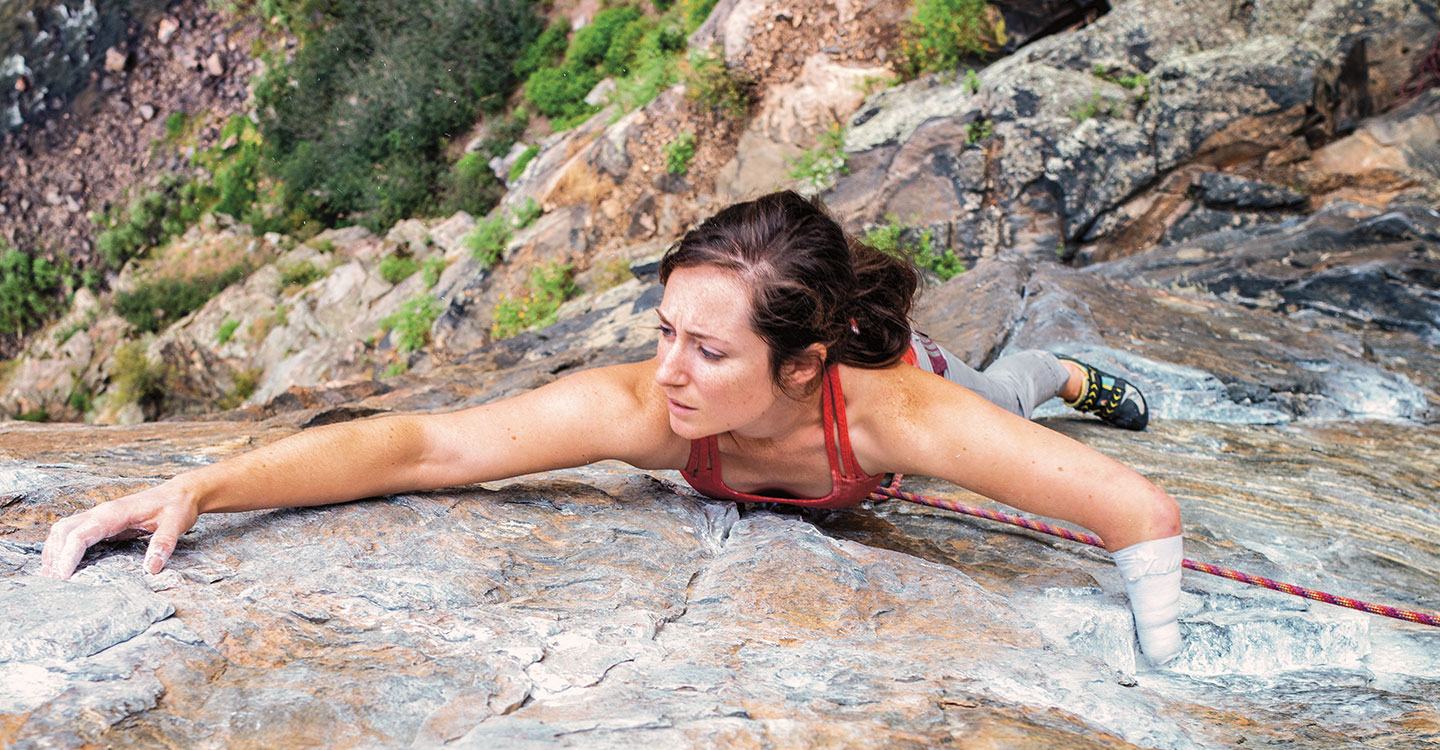@Kros/RemiFabregue
Beck won a gold medal at a 2016 climbing championship in Paris, France.
Maureen Beck clings to a rock face hundreds of meters above the ground. She reaches for a tiny ledge while pressing on the rock with her toes. Beck grips the ledge with her fingertips and lifts herself up. She’s at the top of the cliff!
This is an average day at work for Beck. She’s a professional rock climber, an athlete who scales rock walls. But there’s something that makes Beck different from most climbers. She was born without much of her left arm.
That hasn’t stopped Beck from rising to the top of her sport. She’s won eight adaptive climbing championships, races for climbers with disabilities. She also helps train adaptive climbers and works to make gyms accessible to them.
Learning how to scale rock walls with only one hand wasn’t always easy. “It was a lot of trial and error,” says Beck.
Maureen Beck clings to a rock face. She’s hundreds of meters above the ground. Beck reaches for a tiny ledge. She presses on the rock with her toes. Beck grips the ledge with her fingertips. She lifts herself up. She’s at the top of the cliff!
This is an average day at work for Beck. She’s a professional rock climber. She’s an athlete who scales rock walls. But something makes Beck different from most climbers. She was born without much of her left arm.
That hasn’t stopped Beck from rising to the top of her sport. She’s won eight adaptive climbing championships. These are races for climbers with disabilities. Beck also helps train adaptive climbers. And she works to make gyms easier for them to use.
Learning to scale rock walls with only one hand wasn’t easy. “It was a lot of trial and error,” says Beck.

